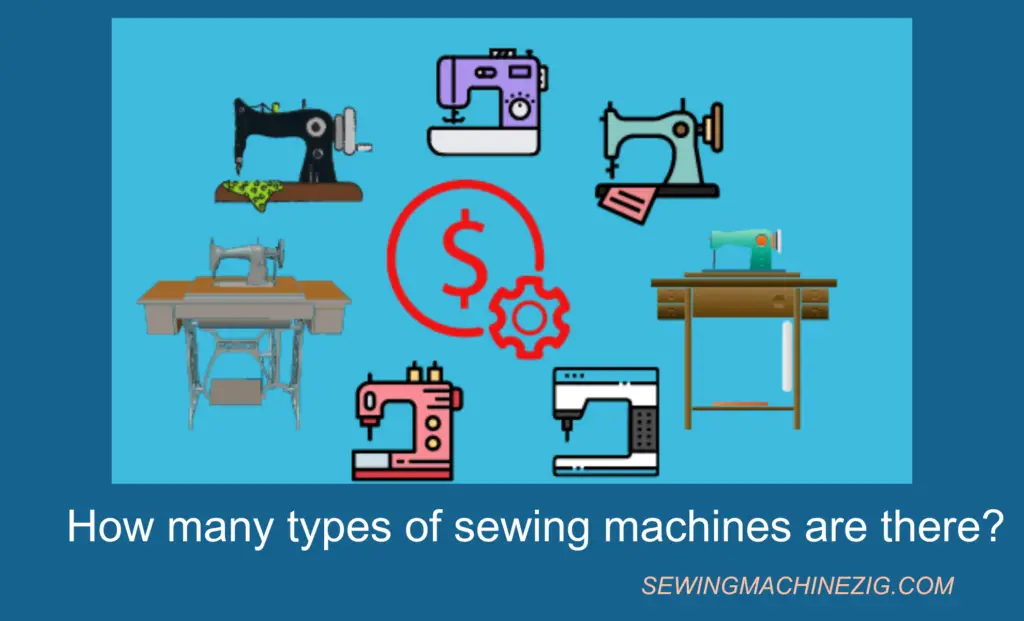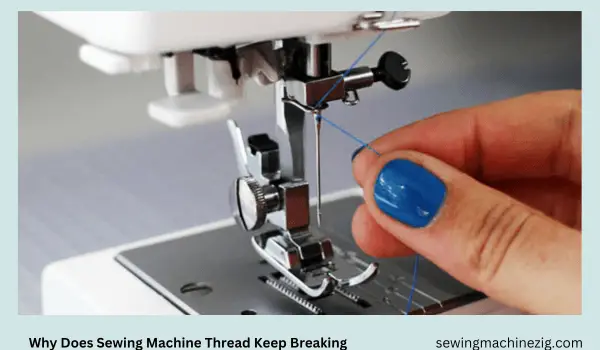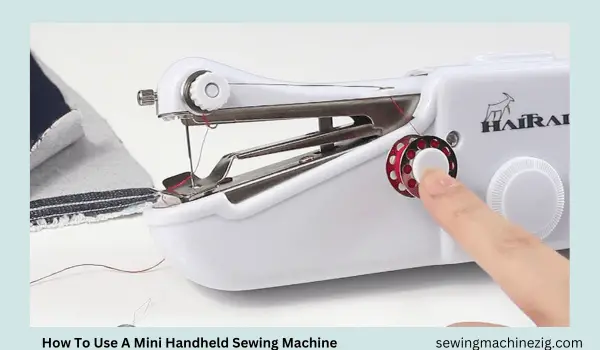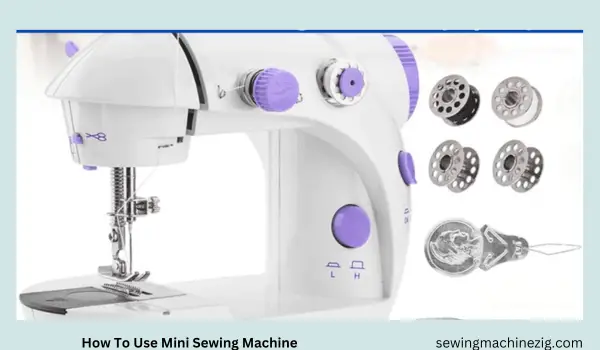
45 different types of sewing machines:
( Industrial and Domestic )
- Heavy-duty Leather Sewing Machines: (Janome HD3000 Heavy Duty)
Heavy-duty leather sewing machines are designed to handle thicker and tougher materials such as leather, canvas, denim, shoes, bags, and belts. After reading the article you will know How Many Types Of Sewing Machines Are There?
Thank you for reading this post, don't forget to subscribe!- Jeans Sewing Machines: (Janome HD1000)
Jeans sewing machines are specialized machines designed to sew through thick denim fabric. They typically have stronger motors and larger needles to handle the tough material.
- Tape Edge Sewing Machines: (Yamato AZF8600)
Tape-edge sewing machines are used for sewing together the edges of mattresses. They typically have a large table, a walking foot mechanism, and a special attachment for sewing tape onto the mattress edges.
- Flange Sewing Machines: (Juki DDL-5550N-7)
Flange sewing machines are used for creating flanges or flaps on fabrics. These machines have a special attachment that folds the fabric and stitches it in place, creating a decorative border or edge.
- Tent Sewing Machines: (Singer 111W155 Heavy Duty)
Tent sewing machines are designed for sewing heavy-duty fabrics such as canvas and vinyl, which are commonly used in the production of tents, tarps, and other outdoor gear. They typically have large needles and powerful motors.
- Heavy-duty Sewing Machines: (Janome HD1000)
Heavy-duty sewing machines are designed for sewing through thick and heavy fabrics such as denim, leather, and canvas. They typically feature more robust motors, larger needles, and special presser feet to handle the tough materials.
- Leather Sewing Machines: (Singer 4423 Heavy Duty)
Leather sewing machines are designed for sewing leather and other thick materials. They typically have a walking foot mechanism, a larger needle, and a stronger motor to handle the tough fabric.
- Blind Hem Stitch Machines: (Singer 14SH654)
Blind hem stitch machines are used for creating a nearly invisible hem on fabrics. These machines use a special stitch that catches only a few threads on the front of the fabric while looping around more threads on the back.
- Button Sewing Machines: (Consew 255RB-3)
These machines are used for sewing buttons onto garments or other items. They typically have a button feeder, which holds and feeds the buttons into place for sewing.
- Handheld Sewing Machines: (Brother XM2701 Lightweight Sewing Machine)
These machines are small and portable, designed for quick repairs on the go. They are powered by batteries or an AC adapter and can handle light to medium-weight fabrics.
- Cylinder Arm Sewing Machines: (Singer 20U109)
These machines have a cylindrical arm that allows for sewing in tight spaces such as bags and pockets. They are commonly used for sewing leather goods and shoes.
- Double Needle Sewing Machines: (Brother ST150HDH)
These machines have two needles that can sew parallel rows of stitching simultaneously, making them ideal for creating decorative stitches and hems.
- Cover stitch Machines: (Janome CoverPro 1000CPX)
These machines are used for creating professional-looking hems and seams on garments. They use a specialized stitch that creates a stretchy, finished edge on knit fabrics.
- Flat Bed Sewing Machines: (Janome 2212) and (Brother XR3774)
These machines have a flat surface and are typically used for sewing medium to heavy-weight fabrics. They are often used in the manufacturing of apparel and upholstery.
- Feed off the arm Sewing Machines: (Pfaff 1245)
These machines are used for sewing tubular items such as sleeves and pant legs. They have a special feed system that allows the fabric to move through the machine without being twisted.
- Upholstery Sewing Machines: (Singer 111W155)
These machines are designed for sewing through thick and heavy materials such as leather and vinyl, making them ideal for upholstery work.
- Welt Sewing Machines: (Adler 555-867)
These machines are used for creating welts or corded edges on garments or upholstery. They use a specialized foot and needle to sew the welt in place.
- Zigzag Sewing Machines: (Janome HD3000)
These machines are used for creating zigzag stitches, which are commonly used for finishing edges and creating decorative designs.
- Long Arm Quilting Machines: (Juki TL-2010Q)
These machines are used for quilting large pieces of fabric, such as bedspreads or quilts. They have a long arm that allows for more space to work with.
- Multi-needle Embroidery Machines: (Brother PE800)
These machines are used for creating intricate embroidery designs on fabrics. They have multiple needles that can be programmed to work simultaneously, allowing for faster and more precise embroidery.
- Portable Sewing Machines: (Singer Tradition 2277)
These machines are small and lightweight, making them easy to transport and use on the go. They are great for small sewing projects or repairs.
- Post Bed Sewing Machines: (Adler 69) and (Juki MB-373)
These machines are used for sewing cylindrical items such as boots or bags. They have a post-shaped arm that allows for easy sewing around curved surfaces.
- Single Needle Lockstitch Machines: (Juki DDL-8700)
These machines are used for general sewing tasks such as hemming and seaming. They create a strong and reliable stitch, making them a popular choice for industrial settings.
- T-shirt Printing Machines: (Brother GTX)
These machines are used for printing designs onto t-shirts and other garments. They use a combination of heat and pressure to transfer the design onto the fabric.
- Walking Foot Sewing Machines: (Consew 206RB-5)
These machines have a special walking foot mechanism that helps to feed thick or slippery fabrics evenly through the machine. They are commonly used for quilting and upholstery projects.
- Bartack Sewing Machines: (Juki LBH-1790S)
These machines are used for creating bartacks, which are short, strong stitches used for reinforcing stress points on garments or other items.
- Carpet Sewing Machines: (Chandler 337)
These machines are used for sewing together pieces of carpet or other heavy-duty fabrics. They have a strong motor and a large needle to handle the thick material.
- Chainstitch Sewing Machines: (Juki MCS-1500)
These machines create a chain-like stitch that is commonly used for hemming and seaming. They are often used in the production of garments and other textiles.
- Darning Sewing Machines: (Janome 3160QOV)
Used for repairing holes and tears in the fabric, these machines create a patch by interweaving threads.
- Velcro Sewing Machines: (FOXSEW- FX-227D-1905)
Designed to attach Velcro to fabric, these machines feature special feed dogs and needles for precise stitching.
- Winders Sewing Machines:
Used for winding thread onto bobbins, these machines are essential for any sewing project.
- X-Y Sewing Machines: (XY-500D)
Used in industrial settings, these machines have a flexible X-Y table that allows for precise stitching of complex patterns.
- Zipper Sewing Machines: (Janome HD3000)
These machines are specially designed to sew zippers onto fabric, making them essential for making bags, jackets, and other garments.
- Knee-operated Sewing Machines: (Singer 201K)
These machines allow the user to control the sewing speed with their knee, leaving their hands free for fabric manipulation.
- Latch Needle Machines: (Tufting Gun)
Used for creating looped stitches, these machines are popular in the production of knitwear.
- Mattress Sewing Machines: (Brother S-1000A-3)
Designed for stitching together the layers of a mattress, these machines have a large workspace and heavy-duty needles.
- Multi-functional Sewing Machines: (Singer 9960 Quantum Stylist)
A multi-functional sewing machine can perform various sewing tasks, such as straight stitches, zigzag stitches, and buttonholes.
- Overlock Sewing Machines: (Juki MO-735)
Used for finishing the edges of the fabric to prevent fraying, commonly used in garment manufacturing.
- Pico Sewing Machines: (Janome Pink Lightning)
A Pico sewing machine is used to create a decorative edge finish on fabric, often used in lingerie and dressmaking.
- Pocket Setter Sewing Machines: (Juki LZ-2284)
Pocket Setter Sewing Machines are used for attaching pockets onto garments, bags, or other items.
- Programmable Sewing Machines: (Brother Dream Machine 2 )
Programmable Sewing Machines or Computerized machines that allow the user to program and save different stitch patterns and designs.
- Ribbon Sewing Machines: (Singer 138W101)
Ribbon Sewing Machines are used for attaching ribbons or similar trimmings to fabrics.
- Saddlery Sewing Machines: (Cobra Class 4)
Saddlery sewing machine designed for sewing heavy materials such as leather and canvas, commonly used for saddle making.
- Shirring Sewing Machines: (Juki HZL-80HP)
Used for creating gathered or pleated fabric, often used in clothing and home decor.
- Straight Sewing Machines: (Singer 191D-30)
The most basic type of sewing machine is used for straight stitching and essential sewing tasks.
How Many Types Of Sewing Machines Are There? These Are The Total Number Of Sewing Machine Available In The Market.
Conclusion:
Sewing machines are versatile tools that come in a wide range of types and models, each suited for different sewing needs and applications. Some sewing machines are designed for beginners and hobbyists, while others are specialized for professional use, such as embroidery or quilting machines. I hope now you understand How Many Types Of Sewing Machines Are There.
FAQs
What is a sewing machine?
A sewing machine is a machine used to stitch fabric and other materials together with thread.
What are the different types of sewing machines?
There are many different types of sewing machines, including mechanical, computerized, embroidery, quilting, serger, and industrial sewing machines, among others.
What is the difference between a mechanical and a computerized sewing machine?
Mechanical sewing machines are operated manually using a foot pedal and have basic stitch settings. Computerized sewing machines have advanced features such as automated thread cutters and programmable stitch patterns.
What is an embroidery sewing machine?
An embroidery sewing machine is a specialized machine designed for creating intricate embroidery designs on fabric. These machines can have a single needle or multiple needles and may include computerized controls for precise embroidery.
What is a quilting sewing machine?
A quilting sewing machine has a longer arm and a larger work area, making it ideal for sewing large pieces of fabric. It also has features such as walking feet and feeding dogs that help keep the fabric in place while sewing multiple layers.
What is a serger sewing machine?
A serger sewing machine, also known as an overlock machine, is a specialized machine designed for creating finished edges on the fabric. It uses multiple threads to create a neat and tidy finish.
What is an industrial sewing machine?
An industrial sewing machine is a heavy-duty machine designed for commercial or industrial use. It is capable of sewing through thick fabrics and can handle large volumes of work
What is a walking foot?
A walking foot is a sewing machine foot that helps feed multiple layers of fabric through the machine evenly. It is often used in quilting and other sewing projects where multiple layers of fabric are being sewn together.
Can I sew leather with a regular sewing machine?
It depends on the type of leather and the thickness of the material. While some regular sewing machines can handle leather, it is generally recommended to use a heavy-duty machine designed specifically for sewing leather.
How do I choose the right sewing machine for my needs?
Consider the types of projects you will be working on and the materials you will be using. Look for a machine with features and capabilities that match your needs, and make sure to read reviews and do your research before making a purchase.
How Many Types Of Sewing Machines Are There
There are several types of sewing machines, including mechanical, electronic, and computerized models. Other types include industrial machines, embroidery machines, sergers, quilting machines, and handheld sewing machines. There are also specialized machines for specific tasks such as buttonhole sewing, blind hemming, and overlock stitching.



